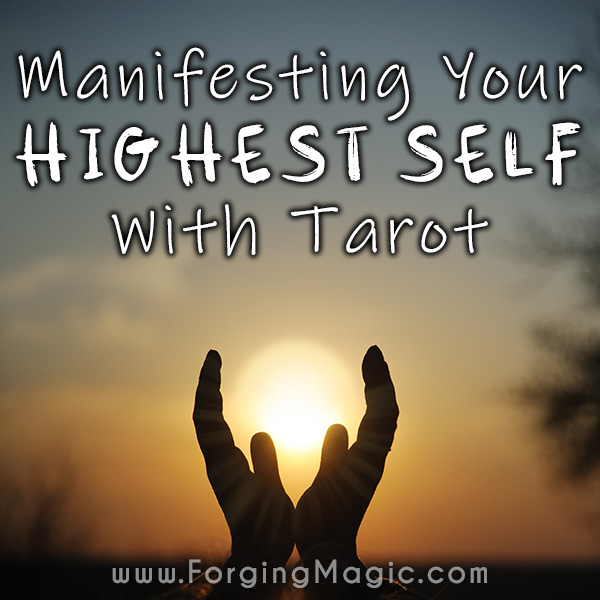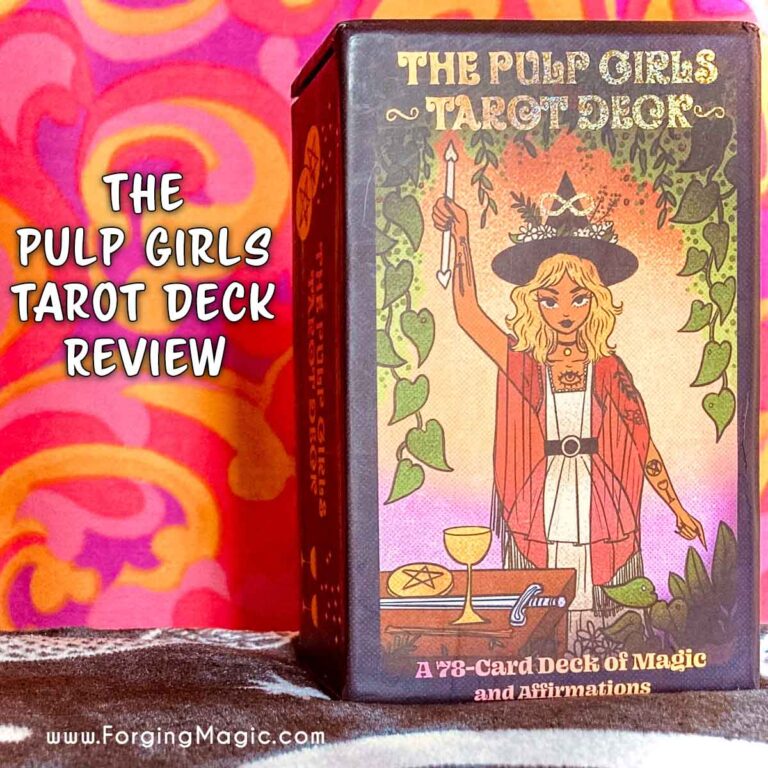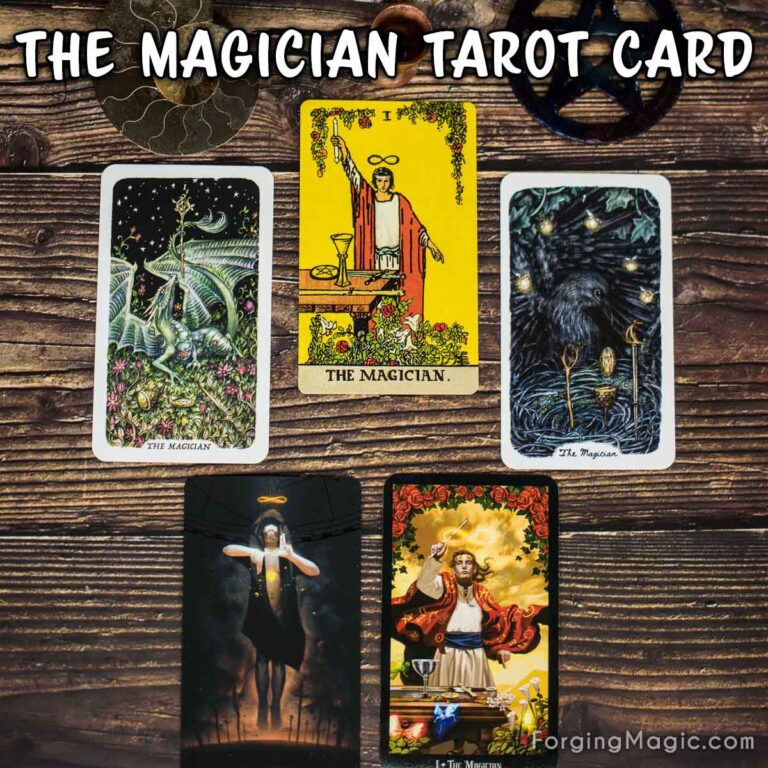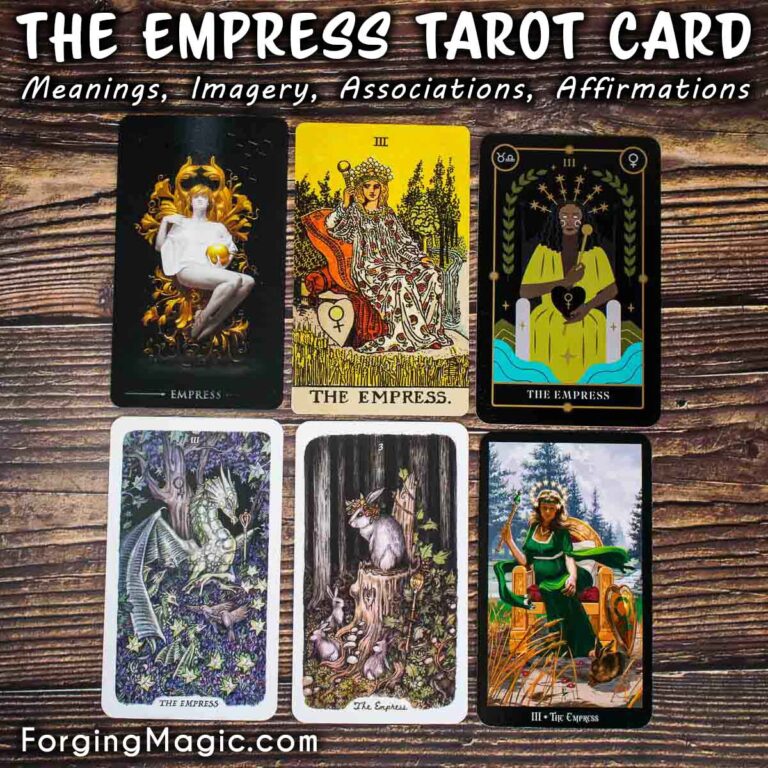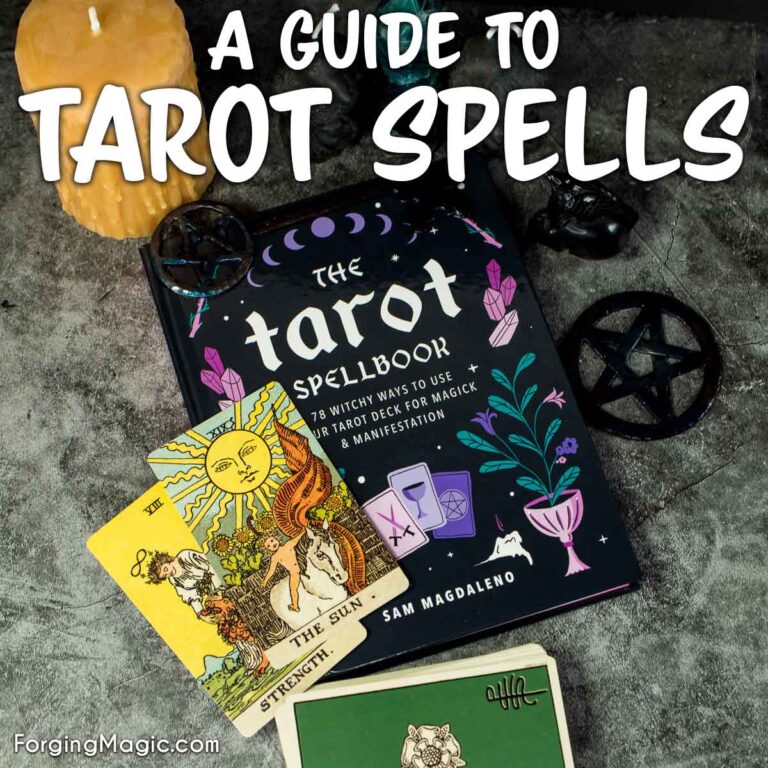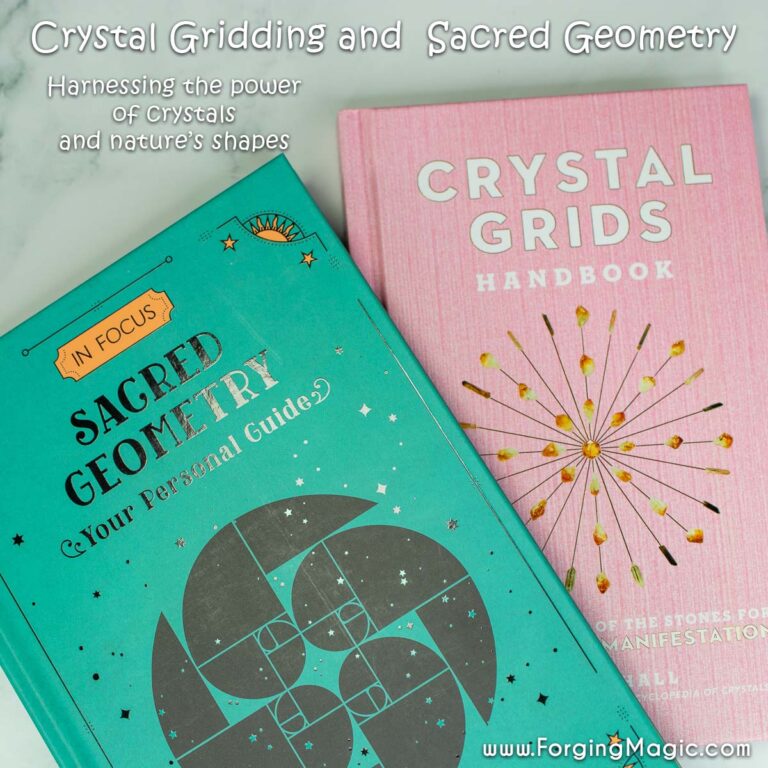What is Tarot?
Spiritual practices such as yoga, meditation, mindfulness, mantras, reiki and more have become popular in recent years. As part of this fascination with spiritual pursuits, has come a renewed interest in the ancient art of Tarot. Tarot decks that were once only available through small New Age stores can now be found in Chapters and Amazon. More and more people are shifting from the fear that tarot cards are “evil”, and entering into a phase of curiosity and interest. Embracing these cards as a magical way to help us navigate our lives in an authentic and aligned manner.
What is Tarot and How to Prepare for a Reading
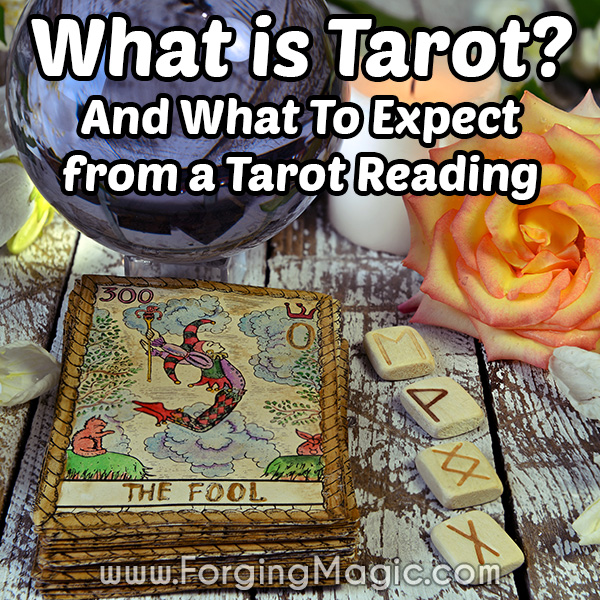
Disclaimer: This article may contain commission or affiliate links. As an Amazon Associate I earn from qualifying purchases.
With all of this renewed interest and trust in spiritual practices, you may find yourself wondering… what exactly are tarot cards? How do they work? And what can I expect from a reading? Today we are pulling the cards from beyond the veil of misconceptions and into a light of knowledge and understanding.
What is Tarot?
Tarot (pronounced teh-row) is a divination system that uses a set of 78 cards with images that follow a specific structure. The images on the cards tell a story, and each card has different imagery filled with symbolism that represents the meaning of the card. Tarot is often used to gain greater insight into specific situations, relationships, opportunities and life changes.
Think of tarot like a special tool that can help open our eyes to other perspectives, offer opportunities for reflection, provide spiritual guidance, and help you access the inner wisdom of our higher self.
A tarot deck is made up of two parts known as the Major and Minor Arcana.
The Major Arcana
The Major Arcana, which roughly translates to “big secrets”, is made up of 22 cards. These cards represent the big events and spiritual lessons that make up our lives.
The Major Arcana Cards in order are:
0 – The Fool
1 – The Magician
2 – The High Priestess
3 – The Empress
4 – The Emperor
5 – The Hierophant
6 – The Lovers
7 – The Chariot
8 – Strength
9 – The Hermit
10 – Wheel of Fortune
11 – Justice
12 – The Hanged Man
13 – Death
14 – Temperance
15 – The Devil
16 – The Tower
17 – The Star
18 – The Moon
19 – The Sun
20 – Judgement
21 – The World
Minor Arcana
The Minor Arcana, which means “little secrets”, is made up of the remaining 56 cards. It is structured in a similar way to a deck of playing cards. There are four suits that can go by a number of different names but the most popular are: Wands, Swords, Pentacles and Cups. Each minor arcana suit is comprised of Ace through Ten, as well as the court cards: Page, Knight, Queen and King. In a regular playing deck, the court cards are the Jack, the Queen, and the King. In the tarot, there are four court cards: the Page, the Knight, the Queen, and the King.
Each suit corresponds to an element, adding layers of meaning to the imagery of the cards.
Wands – Fire (Action)
Swords – Air (Intellect)
Pentacles – Earth (Grounding)
Cups – Water (Emotions)
Together, the Major and Minor Arcana cards help the tarot reader understand the major energetic shifts and spiritual lessons at play in a person’s life, as well as the everyday events and people that are of importance at the time of the reading.
Where do Tarot Cards come from?
Though its popularity feels recent, the oldest known deck of tarot cards dates back to 1392 from Europe. More specifically in Italy, and originally the deck was called Tarocchi. However, cards used for spiritual purposes with images and numbers on them predate this time.
The meaning of the word “tarot” is also unknown, although there are speculations. It is possible that the word comes from the Torah. The name of a Jewish sacred text that contains information regarding Jewish law and practice. Tarot could be an anagram of Torah, minus the H and adding a T. The Torah is referenced in some tarot imagery, as seen in the High Priestess card of the Smith Rider-Waite deck. She holds a scroll of wisdom with the word “Tora” on it. The H could be hidden behind the sleeve of the High Priestess’s dress, but again, that is speculation. Another suggestion is that the origin of the word comes from Rota, the Latin word for wheel. Once again, Tarot could be an anagram for this word. However, there is still plenty of mystery surrounding the origin of the words and the cards themselves.
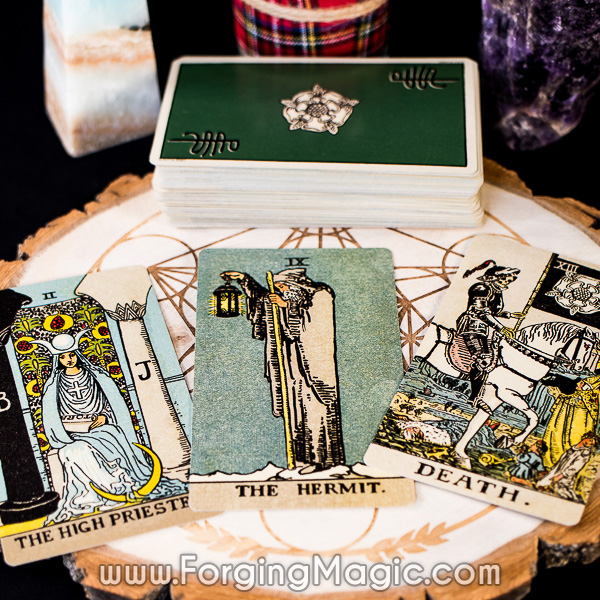
How do Tarot Cards Work?
The cards themselves hold imagery and archetypes that speak to our subconscious. Think of the cards as a language of images that describes the human experience through symbolism. For example, take the Hermit card in the Major Arcana. Traditional imagery features an old man with a long beard, cloak, and staff standing atop a mountain. You don’t need to be psychic to gather that introspection and time alone may be called for when this card appears. This card suggests a quest for personal wisdom and knowledge. One that arguably each person will embark upon at some point in their lifetime.
Each card has different symbolism and therefore a different meaning. A reader will use both their knowledge of the tarot card meanings and their intuition to translate the messages of the cards.
Laying the cards out in a tarot spread, the reader will also interpret the meaning of the cards based on their position. A spread is a pattern in which the cards are placed. Together the spread of cards tells a story. A simple example of a spread could be the past/present/future layout. The card on the left represents the past, the middle card is the present, and the card on the right the future.
Spreads can be as simple as laying down one card, or could use the entire deck. If tarot cards are the words and feelings, then the spreads are the grammatical structures that tell the story and shape them into a coherent message.
What is the difference between Tarot and Oracle?
This is a pretty big question, and for an in depth explanation, check out this resource: Oracle Cards vs Tarot Cards, What’s the Difference?
In a quick nutshell, Oracle decks do not follow the same fairly strict structure and format as tarot decks. Oracle has a more simple structure and purpose. While tarot decks have a specific set of cards and a structured system with the Major and Minor Arcana, oracle decks are more flexible and can vary widely in terms of card numbers, themes, and styles.
Oracle decks often have a unique vision and symbolism that focuses on a specific theme such as angels, animals, goddesses, astrology, crystals, affirmations, nature, etc. The cards usually feature artwork, and keywords/short phrases on each card that convey the intended meaning. This makes them wonderful decks for beginners.
Oracle cards also do not need to be read in a full spread. They are very popular for single card pulls, affirmations, meditations, etc. Check out this resource to learn more about Oracle vs Tarot.
Do Tarot Readings Tell the Truth?
What is truth? Think of tarot cards as a language of images that describe energies, and the tarot reader is their translator. Certain readers will translate these messages in the cards in a way that resonates with you more than others. The cards show the reader what the client is experiencing on a subconscious level as well as the conscious level. This is a lot of where the magic of tarot happens.
Many of us are driven by feelings or fears in our subconscious, but do not always know how to identify those feelings or how it is driving us. The tarot reader can use the cards to put into words the underlying feelings the client is experiencing. It is in this way that the truth can be subjective. The tarot reader is truthfully telling you what they see. However, the client may or may not recognize it as “truth.”
The tarot cards don’t describe facts. If you view accuracy as the tarot cards being able to tell you the winning lotto numbers, then you will be disappointed. They are describing energies, habits, feelings, and experiences. They tell you the truth of your subconscious and the energies around a situation. It is up to the individual to use this information in a way that aligns with their personal truth.
Are Tarot Cards Safe?
Here we are at the crux of many a misunderstanding regarding tarot. Are they safe? Are they evil? Will they summon a ghost? With so many misconceptions and mistruths surrounding tarot, it’s no wonder many people feel unsure of this powerful spiritual tool. What we do not understand, we often fear, and tarot is no exception.
In short, yes, tarot cards are safe. They are not tools of the Devil, they do not hold some kind of evil power, and they do not hold your future in their grasp. Tarot cards are a tool that we use to look within and to better understand ourselves.
The Hollywood image of a shady woman lurking in the shadows, beckoning you to come into her tent so she can show you the Death card, is far from the reality of a tarot card reading experience of today. Speaking of the Death card, this is a great example of the misconception of tarot. This card does not represent the physical death that so many of us fear. It represents an ending that is necessary for a better beginning to follow. It may be considered the death of the control of the ego, leading to a more spiritual existence. This is a rather far cry from the thought of a physical death threatened by someone wearing too much eyeliner in a movie, is it not?
A good tarot reading will provide clarity regarding your feelings and your situation, as it serves as a mirror for our subconscious. If you consider looking within yourself dangerous, then perhaps tarot and other forms of divination are out. For those who seek to look deeper and grow, it is a helpful and enlightening tool.
What Can I Expect from a Tarot Reading?
To make the most of your tarot reading experience, it is best if we move away from the thought of tarot as fortune telling. While a reading can give us an idea of what the future may hold, this isn’t where magic is to be found. Focusing solely on the future takes us from our point of power, which is the present. It implies that we have no power over our future. That it is fixed. And that we are at the mercy of fate. This is another reason people may fear tarot, as they assume their future is fixed and fear being told something they don’t want to hear.
If we, instead, focus on understanding our situation, seek to understand the past, and then examine what we can learn and how we can grow, then we really start to tap into the power of a tarot reading.
Tarot readings will bring us back to a place of personal power and responsibility, which is a form of magic and consciousness that is not to be underestimated. The future is a combination of fate and our actions. Tarot helps us navigate this so we can take an active role in the shaping of our lives.
If you can go into a reading seeking clarity and guidance about yourself, what is happening in your life, and what you can do to achieve the results you wish, you will make the most out of your reading.
Can a Reading Be Done Online?
With the rise of the internet and virtual connections, many businesses are going online, and tarot readings are no exception. Not only can readings be done online, but they can be done in a number of ways.
An online tarot reading may be held over video, allowing the reader and the client to see each other.
Another option for online tarot readings are email readings. In this situation the client sends the reader their question. The reader then emails a write up of their reading to the client.
The idea is that everything is energy. We are all connected through energy, tarot readers can tap into the energy of their clients even through virtual connections. Distance does not matter, because energy is everywhere and everything, connecting us all. The results of online readings can be just as powerful as an in-person reading.
Manifesting Your Highest Self
Tarot an be a powerful tool for manifesting your highest, most authentic self. As a tool, it helps you tap into your power.
Learn more about Manifesting Your Highest Self with Tarot.
Tarot has provided guidance and clarity for people across centuries and continents. A language comprised of images and symbolism, tarot readings help us to speak the language of our souls and the universe. This allows us to better know ourselves and our purpose. The study of tarot is fascinating and ongoing, for it is the study of the human experience. I hope that there is a little less fear and confusion surrounding the cards, but no less magic and wonder. For what is life without a little mystery and magic?
Tarot Decks
Want to look into purchasing your own tarot deck? Here is a look at some of our favourite decks.
Bookshelf Suggestions
Want to learn more about Tarot? Here are some of our favourite books, plus a great starter deck if you are interested in trying it for yourself.
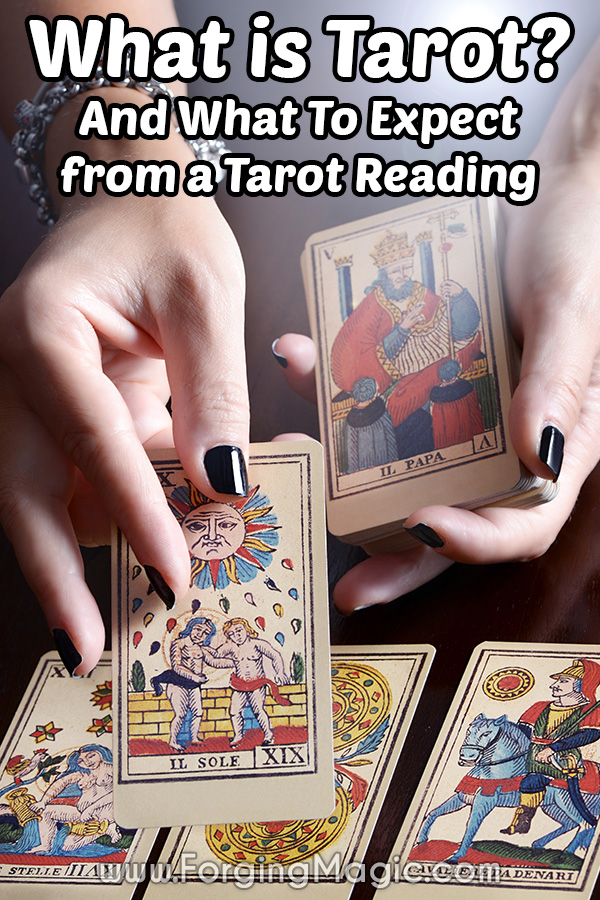
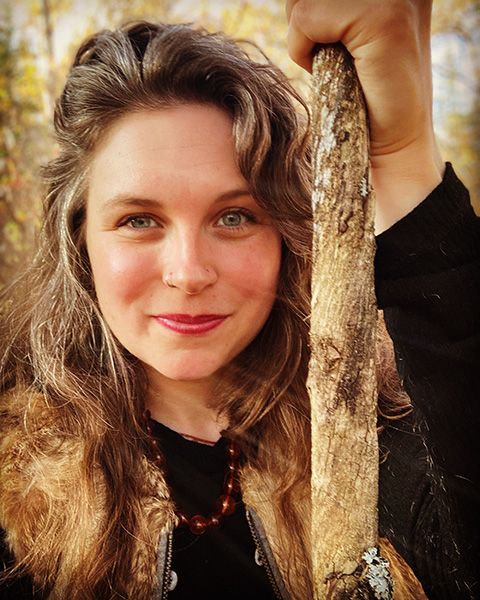
Jenny McCargar
The Mystic Mermaid
Jenny is a professional shamanic practitioner and tarot reader. Her academic background is in French and Spanish translation studies. Through her academic and spiritual studies, she realized we are all spiritual translators, translating our feelings, experiences, and messages from spirit. Jenny endeavours to help people see the light within themselves, each other, and nature, to dream a healed dream into being for ourselves and the world.

